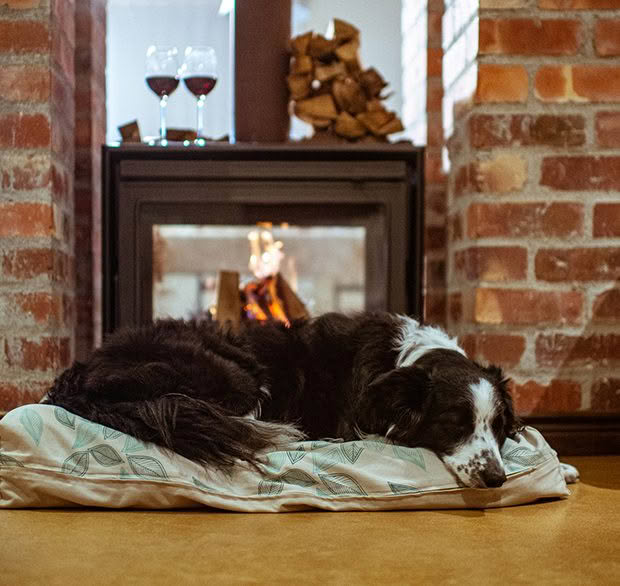7 ways to get a hotter, cleaner fire this winter

This is how to light a clean fire, according to two Norwegian wood-burning experts.
Words Nadene Hall
Norwegian energy researchers Øyvind Skreiberg and Morten Seljeskog have been researching wood burning for heating for 25 years. They say if you get a burn right, you can reduce emissions from a fire by 50-80% compared to an inefficient burning one.
These are their tips:
1. LIGHT YOUR FIRE UPSIDE DOWN
Skreiberg and Seljeskog’s work found the most efficient and clean way to light a fire is to have large wood on the bottom, kindling in the middle, and paper on top. It can reduce particle emissions by 50-80%, achieve more even combustion, and prevent soot from settling on the glass.
As the larger pieces of wood begin to burn, they release particles and gases. The flames from the kindling sitting above them burn them off before they escape up the chimney. This type of fire does take a little longer to get going, 10-20 minutes, but once it does, it will burn hotter and more efficiently than a ‘right side up fire’.
To build and light an upside-down fire:
– Add a few larger pieces of wood into the bottom of the firebox – there should be plenty of room around them for air to circulate. The final wood content should be about 25% of the chamber’s volume so it gets hot quickly, which burns the maximum gases and particles.
– Sit a layer of kindling on top.
– Top with a handful of woodchips or a firefighter, then light it – don’t use paper.
– Have the air intake open for at least 10 minutes to allow the firebox to get hot as quickly as possible.
2. REPLACE YOUR OLD FIREPLACE
If you have a woodburner from before 1998, it’s best to replace it. Modern designs are vastly superior in terms of energy efficiency and emissions as they use a more sophisticated staged air combustion process.
3. READ THE INSTRUCTIONS
A new woodburner will come with instructions on how to create the cleanest burning fire in it. It’s important to read them as you manage their airflow quite differently compared to old models. Instructions will include how much wood to use, and how to stack it in the firebox.
4. AERATE THE ROOM BEFORE YOU START
Open a window to get airflow through your home before lighting a fire. Switch off vents such as oven hoods, and keep the door of the burner open for at least 20 minutes after you light a fire so it can more easily consume the large amounts of oxygen it needs to get hot, fast.
5. USE GOOD WOOD
Only use small, dry pieces of firewood, not wet or large logs, or rubbish. SINTEK research shows the perfect piece of firewood is 27cm long, and 2x5cm thick.
Wood that’s too wet expends most of its energy turning the moisture into steam, not heat. Dry wood will ‘ring’ and sound hollow if you hit two pieces together, compared to the dull ‘dump’ sound of two wet pieces. If you’re unsure, you can buy a simple moisture meter for wood for about $30-$40.
6. KEEP IT HOT
Once a fire is burning at its hottest, regularly add small pieces of wood and lay them horizontally to get maximum heat and low emissions. Don’t let it touch the walls or the glass of the firebox. This cools the flames, which creates more soot and less heat.
7. AIM FOR THE PERFECT FLAME
Perfect flames are the best indicator of optimal combustion. They’re light coloured with blue tones close to the wood but shouldn’t fill the entire firebox. Dancing orange-yellow flames that fill the firebox are a sign of too much air. Small, weak flames topped with visible smoke mean too little air.
Love this story? Subscribe now!
 This article first appeared in NZ Lifestyle Block Magazine.
This article first appeared in NZ Lifestyle Block Magazine.
